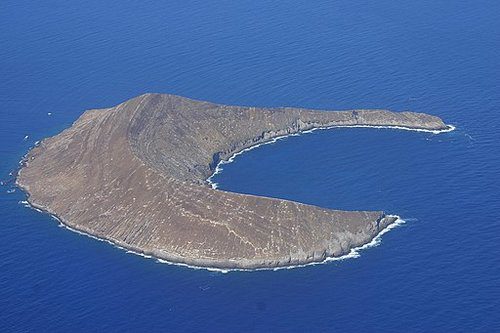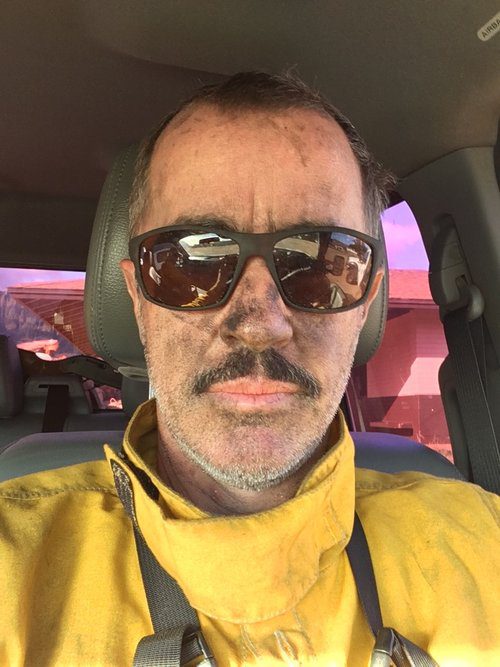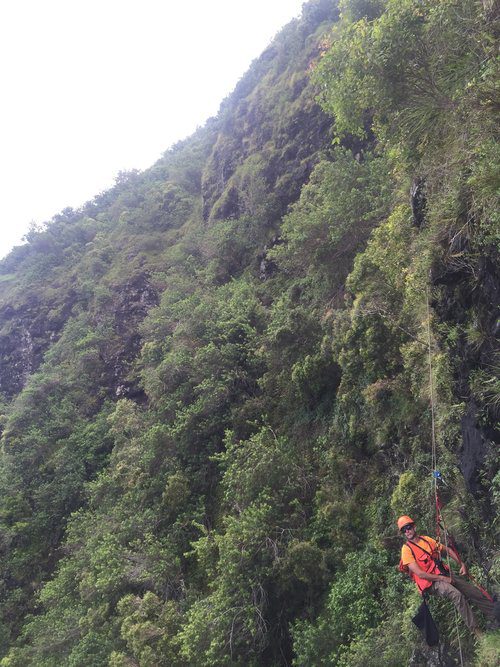In "Partner Perspectives" we get to know the diverse people, roles, and views of wildfire management in the Pacific. Mike Walker kindly spent some time with us to share about his experience in natural resource management, how fire environments vary, and enjoying the mountains and ocean.
Name: Mike Walker
Role: Fire Protection Forester, Division of Forestry and Wildlife, HI Dept. of Land and Natural Resources; Pacific Fire Exchange Steering Committee
Pacific Fire Exchange (PFX): Describe your role at the Division of Forestry and Wildlife (DOFAW).
Mike (MW): As the Fire Protection Forester in the Administrative Branch I have variety roles in wildfire prevention, pre-suppression, and suppression. For example, I make sure that trainings are up to date and arranged for all DOFAW staff involved in the firefighting program. I oversee many of the grants that come through the Department – like the State Fire Assistance Grant and Volunteer Fire Assistance Grant from the US Forest Service (USFS), as well as the Grants-In-Aid that come in from the Hawaii Legislature. I’m also a safety officer here in the office, making sure things like the fire extinguishers and AEDs (Automatic External Defibrillator) are all up to date and properly serviced. DOFAW has an emergency support function for wildfire and hurricane response, so we coordinate with the Hawaii Emergency Management Agency (HI-EMA) as well as the county Emergency Management Agencies to allocate resources in the event of a disaster.
PFX: Describe your day to day.
MW: The majority of my days are spent at the Kalanimoku office in Honolulu. I’m either writing reports or grant applications, or coordinating trainings – and writing lots of emails! I sometimes travel for conferences and trainings as well. Once the relative humidity (RH) drops a bit and temperatures rise, I’ll be responding to more fires myself.
PFX: Describe your day to day.
MW: The majority of my days are spent at the Kalanimoku office in Honolulu. I’m either writing reports or grant applications, or coordinating trainings – and writing lots of emails! I sometimes travel for conferences and trainings as well. Once the relative humidity (RH) drops a bit and temperatures rise, I’ll be responding to more fires myself.
PFX: What first sparked your interest in wildfire?
MW: I grew up and studied in Florida – a fire-adapted environment. My interest in wildfire started in the School of Forestry at the University of Florida when I took a fire ecology class. I was really interested in how fire shaped ecosystems in the southeast coastal pines. When I moved to Hawaii in 2000, I quickly learned that Hawaii’s ecosystems evolved almost entirely free of fire influence, so that sparked a whole other interest in the evolution of ecosystems, and also in fire’s current role in a system that did not evolve with it.
PFX: What thoughts did you have as you learned about Hawaii’s fire situation?
MW: “Where’s the lightning?” Florida is the lightning capitol of the US, and during my first couple years on Maui its absence really struck me. A majority of the fires in Florida, outside of prescribed burns, are started by lightning strikes. That was one thing that stood out for me –how small a role lightning played in Hawaii. Also, the plant and forest composition, especially in the dry forests. I was just amazed that ecosystems like that existed in the absence of fire playing a large role in them. It was one of many things that fascinated me about Hawaiian ecosystems.
PFX: Share an experience you’ve had in partnering with others to meet a resource management goal.
MW: When I first started this position, Rob Hauff introduced me to Patrick Chee, a wildlife biologist working on the rat eradication project on Lehua Island. The island is uninhabited and serves as a bird sanctuary, but sea bird populations had been declining due to the rodent pressure. The rats impact the birds, and also the native plants and intertidal zone.


When I met Patrick he was in a bit of a bind because, due to local political pressures on Kauai, the Division staff who were restricted use pesticide applicators declined to participate in the scheduled aerial drop of the diphacinone (a rodenticide). So I pulled out my restricted use pesticide applicator certificate and said “Will this work?” I was immediately wrapped up in that project, which included a mix of Division staff and Island Conservation - a private non-profit involved in rat eradications around the world, and community members from Niihau. It was a great way to work with people with international experience in rodent eradication, as well as meeting and working with people from Niihau, who have a really unique culture and language. We were all able to come together and collaborate on this project, bringing experience from all different backgrounds.
PFX: What is one unanswered question you have about wildfire?
MW: Will we ever be able to successfully use prescribed burning as a management tool in Hawaii, in combination with all the other tools we have available like grazing and outplanting? What is the role that prescribed fire can play in a restoration cycle? I know that a few agencies do prescribed burning, like Fish and Wildlife at James Campbell refuge for habitat, and at Hawaii Volcanoes National Park for research. From research papers it seems like planned burning works with native pili grass, but that generally the detrimental effects on native ecosystems definitely outweigh the positive.
PFX: What is one unanswered question you have about wildfire?
MW: Will we ever be able to successfully use prescribed burning as a management tool in Hawaii, in combination with all the other tools we have available like grazing and outplanting? What is the role that prescribed fire can play in a restoration cycle? I know that a few agencies do prescribed burning, like Fish and Wildlife at James Campbell refuge for habitat, and at Hawaii Volcanoes National Park for research. From research papers it seems like planned burning works with native pili grass, but that generally the detrimental effects on native ecosystems definitely outweigh the positive.
Still, now that we have these novel African savannas established in Hawaii -with Guinea grass in the understory and kiawe and haole koa in the overstory- can we use prescribed burning in those areas to control fuels? It’s rather daunting because Guinea grass is such a flashy fuel. A combination of grazing and prescribed fire could potentially work. Or maybe we could integrate prescribed burns with planting other pasture grasses that could out-compete Guinea grass.
PFX: Do you have experience with prescribed burns?
MW: I have a little experience with prescribed burning. We used to do it in the fire ecology class in Florida. The Forestry School runs a large research forest just outside of Gainesville. For classes we’d go in and burn different stands of timber. Depending on the time of year, we could manage for a variety of goals – whether to promote certain plants in the understory for wildlife foraging, or clear out the undesirable hardwood species encroaching in timber stands. I got to learn about different timing and intensity regimes for prescribed burning there.
PFX: What is your favorite way to spend your free time?
MW: I really enjoy spending time on the water, riding waves on a variety of things like short boards, long boards, stand up boards, kite surfing, body surfing. I’m not quite a life-long surfer, but I’ve got about 30 years of surfing under my belt now. I just really like being out on the water, as well as in the mountains. In my former job, I used to spend nearly all week in the mountains so I would try to spend the majority of my weekend around the ocean. Now that things have changed I try to split my time between hiking, mountain biking, and surfing on the weekends.


The mountain activities are human-powered to get up, and gravity-powered to get down. I like the gravity-powered part better! Most of my mountain bike experience has been on Oahu and Maui. Maui has a nice mountain bike park outside of Makawao now, and it’s really fun. On Oahu there’s a really nice downhill trail at St. Louis Heights – Waahila State Park. There’s a variety of trails all over Oahu which are pretty fun.
PFX: What’s something most people don’t know about you?
MW: I once rode my mountain bike for two and a half months on a trip crisscrossing the Continental Divide. I think I crossed the Divide around 26 times, from the Canadian border down into southern Colorado. It was all on Forest Service roads – about 80% of the route is on double track, 15% paved, 5% single-track trail. The trail route had been around for two or three years when I did it with a bunch of mountain biking friends from Florida. It was an amazing time. I love Montana, and we spent almost a month there. I have really fond memories of that trip.
